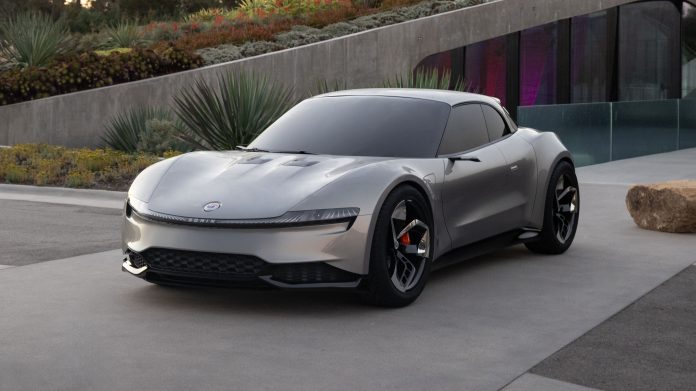Electric vehicle startup Fisker has announced updates to the upcoming Ronin super GT, unveiled earlier this month.
The Ronin super GT, tagged as “the world’s most sustainable supercar,” is a five-seat luxury sedan originally teased in May. After officially unveiling the model at the automaker’s Product Vision Day event, Fisker has now revealed a launch date in the latter half of 2025, alongside the electric vehicle’s price tag: $385,000.
While the exorbitant cost is significantly higher than the $37,499 to $68,990 price range of the company’s first release, the Ocean SUV, Fisker is only planning to build 999 units. The car also boasts an impressive 600-mile driving range, 70% more than the Ocean’s 350 miles and the best out of any competing electric vehicle currently on the market. With these two unique selling points, the company should have little trouble getting reservations for the Ronin super GT.
What makes the electric vehicle more interesting than its specifications and price, however, is the insight it offers into the automaker’s penetration strategy. Alongside the Ronin super GT, Fisker has two other models in the works: a budget-friendly $29,900 electric vehicle titled the “Pear” and a battery-powered pickup called the “Alaska.” Once all products are launched, the company’s lineup will include SUVs, luxury sedans and trucks. This trifecta sets the company apart from other EV brands, which have, for the most part, kept their products within the same categories and price ranges. Even Tesla has yet to include all three body styles in its lineup, although that could change soon if the Cybertruck launches on schedule, nor has it launched a sub $30,000 product.
Although the Ronin super GT is a standout entry into its product catalog, Fisker itself is proving to be a standout brand. The automaker recently scored a positive per-vehicle profit margin, a rare achievement for EV startups. Like most of its competitors, the company is still taking a risky gamble on the wider adoption of electric vehicles. However, should the EV segment grow and its promises hold true, the company could find itself better positioned to attract a wider range of customers than many of its competitors.




